In Part 1 of Remote Help for Family and Friends, I taught you how to install and begin using TeamViewer to provide remote help for your family and friends.
In Part 2, I conducted a remote session and actually did some maintenance tasks. Here in Part 3, I’ll show you how to set up Unattended Access and to ensure the security of the remote computer.
Set Up Unattended Access
Manual access to the remote computer requires you and your friend or family member to launch TeamViewer at the same time. In the process, a random password is generated on the remote computer for use during the session, which you must enter into your login screen. (You can set this to be from 4 to 10 characters in length.) This default is very good for security reasons: no one can access the remote computer if it’s unattended. This requirement is slightly eased once you create your TeamViewer account and pin the Partner to it. All you do then is double-click the online computer in the My Computers list—but your partner is still required to manually launch TeamViewer for it to show up as “online.”
However, TeamViewer also allows you to set up the remote computer for unattended access, which will start TeamViewer upon booting that computer, so you don’t need your partner’s assistance during the session. If you set this up, you can take other security measures to protect the computer; these are described below.

- To set up unattended access, launch the TeamViewer Console and select Connections > Setup unattended access… The wizard to set up the option appears.

- Click Next to proceed. A dialog appears where you provide a name and password for the computer. You can accept the default name or create a new one.
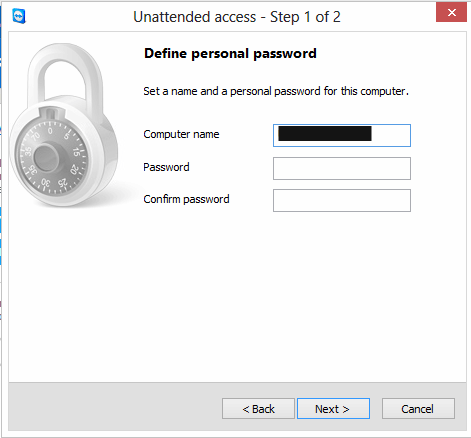
- Click Next to continue. The familiar Account Creation dialog appears.
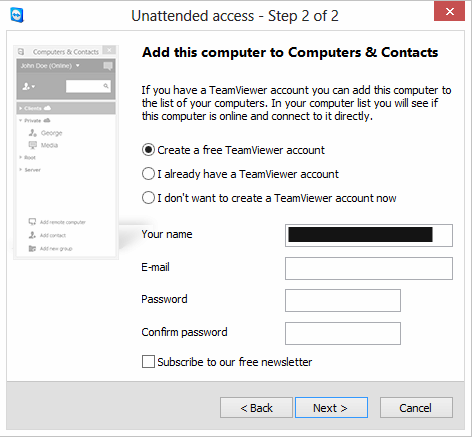
- Since you already set up a free TeamViewer account in Part 1 of this series, choose I already have a TeamViewer account. The screen changes to a log on.

- Enter the Email / username and password for the account and click Next. The wizard complete screen appears.
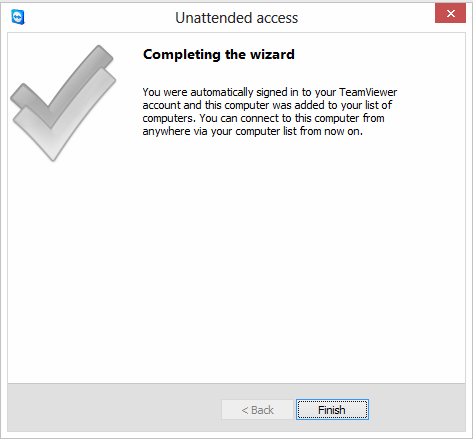
- Click Finish to close the wizard.
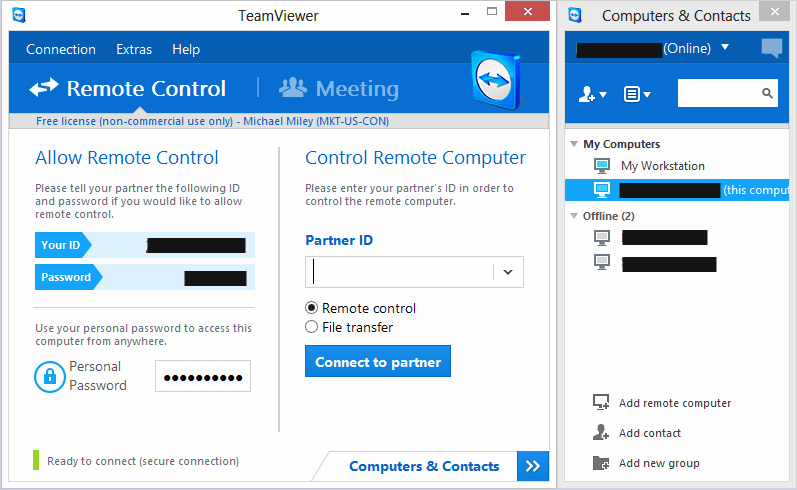
- The remote computer is now set up for unattended access. If the remote computer has booted up, all you need to do now is log into your TeamViewer account, double-click the partner in the My Computers list, and you have remote access to the computer. That means you can set up a weekly time with your partner to do maintenance for them. They don’t have to be present for the session.
Security Tips
- If you’re security-conscious (and you should be!) note that you can disable unattended access on the remote computer anytime you wish.

- In the TeamViewer menu in the System Tray, choose the Options item; or use its equivalent from the Extras menu in the TeamViewer Console. The TeamViewer Options screen appears.
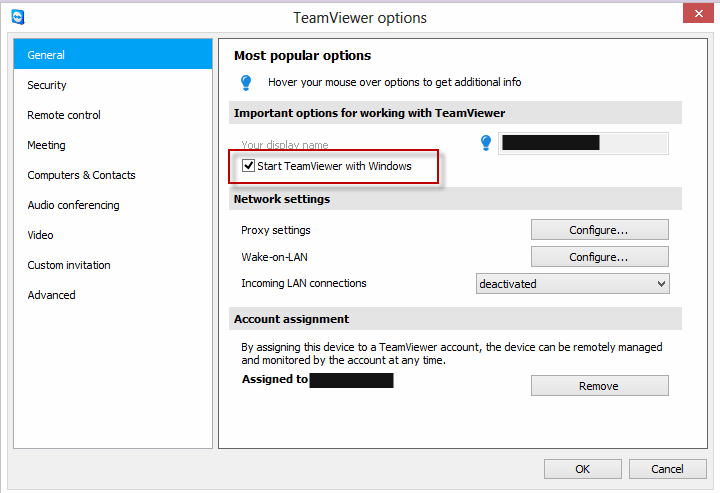
- In the General menu, uncheck Start TeamViewer with Windows to disable the automatic launch of TeamViewer when that computer boots up, then click OK.
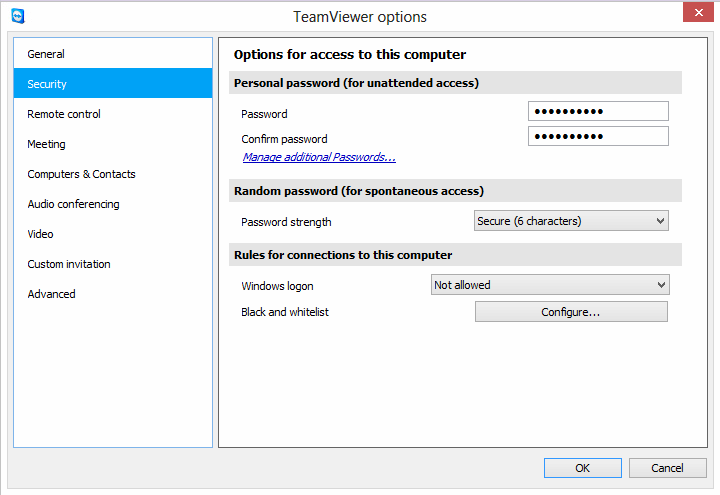
- In the Security menu, you can also click Configure to add your own Partner ID to the Black and whitelist for the remote computer. The Black- and whitelist appears.
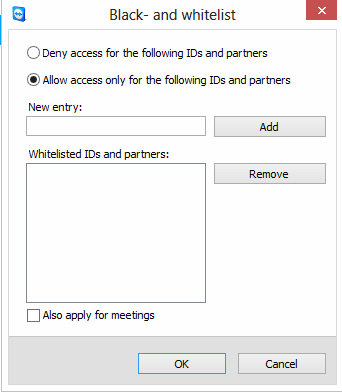
- Select Allow access only for the following IDs and partners, then enter your base computer’s ID in the New entry field, click Add, then OK. Now, only your ID will have access to that remote computer.
- Note too, you or your partner can choose Exit TeamViewer in the TeamViewer system tray menu after a session. This disables unattended access until the remote computer is rebooted. If you’re connected as you do this, you’ll be disconnected.
- Finally, if you don’t want to use unattended access and are fairly satisfied with manually paired access, note that you can also increase the strength of the random password that TeamViewer generates for improved security. In the Options | Security menu, pick a password strength anywhere from 4 to 10 alphanumeric characters.

Remember, TeamViewer is free for personal use. If you plan to use it for business or commercial purposes you should pay for a license. It’s an honor system. Note too, of course, that TeamViewer isn’t the only remote access software that’s available. Just do a search on Google for the top 10 remote access software solutions and you have more free and paid options than you have time to test.
For Safer Connection
To further enhance the protection of your devices at home when remote computing, your home network needs to be safeguarded as well. Trend Micro Home Network Security is an easy-to-use security solution that can help shield all the devices in your home against security threats.
Trend Micro Home Network Security station connects to your home Wi-Fi router. Once activated, it scans all traffic passing in and out of your home network, prevents intrusions, blocks hacking attempts and web threats, and helps to protect your household member’s privacy! Click on the button below to try Trend Micro Home Network Security:
Click here to read Part 1 and Part 2 of this series. Happy remote computing!
